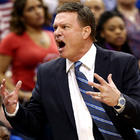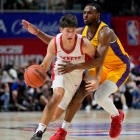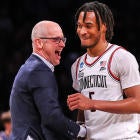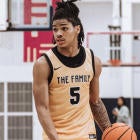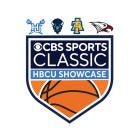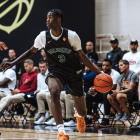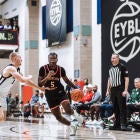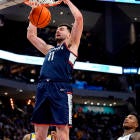College basketball schedules are starting to be finalized and announced. And I was pleased to learn this week that two big brands -- Kansas and North Carolina -- are playing relatively challenging non-league schedules.
I tip my hat to them.
And I wish more schools would at least try to follow that lead.
There are lots of things that limit the popularity of college basketball -- among them the reality that the top players rarely return to school after they establish themselves as top players, as well as the fact that a good chunk of the season is overshadowed by football. But another issue is scheduling -- specifically how the majority of good teams spend much of their non-league schedules playing absolute mismatches.
Absolute. Mismatches.
Take almost any school ranked in the preseason of almost any college basketball poll, and what you'll find is that they're going to be double-digit favorites throughout their non-league schedule way more often than not. Arguably the best example from last season is Arizona, which was ranked 12th in the preseason. The Wildcats played a total of 13 non-league games. They were at least 11.5-point favorites in 10 of the 13, at least 16.5-point favorites in eight of the 13. Their non-league strength of schedule ranked 303rd nationally, according to KenPom. And they ended up winning nine of their 13 non-league games by double-digits.
Does that sound interesting to anybody?
In fairness, this is not unique to Sean Miller's program.
Kentucky played 13 non-league games last season. The Wildcats were a double-digit favorite in nine of the 13, at least 20-point favorites in seven of the 13. And they won nine of the 13 by double-digits. Meantime, Maryland also played 13 non-league games last season. The Terps were a double-digit favorite in nine of the 13, at least a 19-point favorite in six of the 13. And they won 10 of the 13 by double-digits.
So on and so forth, this is college basketball.
Too many good teams playing too many bad games.
To be clear, this is somewhat the result of the nature of the sport and not always the byproduct of coaches deliberately scheduling just to stack easy wins. The problem with college basketball, you see, is that there are too many schools in Division I -- like about 200 too many -- and most Power-5 institutions have to schedule a certain number of "buy games" to create a season-ticket package that'll produce revenue. So I get it. I totally understand. But if the people who care about the sport ever truly want to enhance the sport, this is one of the things that should be addressed.
How can we get good teams to play other good teams more often?
There's not a simple answer to that question, I don't think.
But I'd love for college basketball's power brokers to at least search for one.
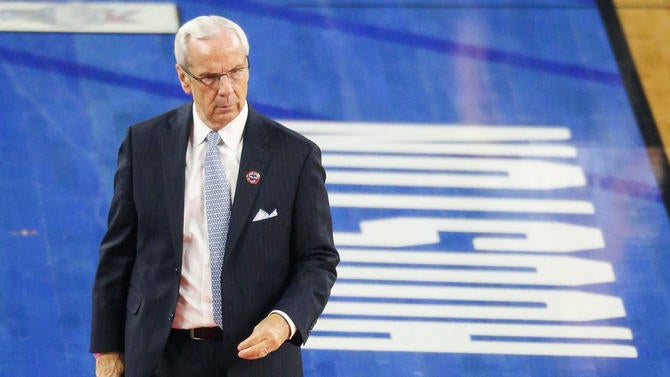
FIVE OTHER THINGS ON GP'S MIND
1. Good on California, and coach Cuonzo Martin, for granting Jordan Mathews an unconditional release this week. That's the way all schools should handle transfers. They should never be restricted by an institution's pettiness or paranoia.
2. One of the best transfers on the market right now is former Kentucky forward Marcus Lee. I'm told it's basically down to California and Washington. And the smart money is on Cal, if only because its campus is so close to Lee's California home.
3. It was nice to see the NCAA grant Illinois guard Tracy Abrams a sixth season of eligibility this week because he's been so terribly unlucky. Abrams missed all of the 2014-15 season with a torn ACL, then missed the entire 2015-16 season with a torn Achilles tendon. The last time he played a game was March 23, 2014. With fingers crossed, I wish him a healthy final year of college.
4. Akolda Manyang left Oklahoma officials no choice. They had to dismiss him after he allegedly assaulted a cab driver this week and was charged with first-degree aggravated robbery -- only a month after he was charged with a felony count of aggravated assault and battery for allegedly punching a former Oklahoma football player. I can't defend any of that stuff. But, man, this is such a sad story that seems to feature a young man spiraling after his older brother committed suicide during the NCAA Tournament. Hopefully Manyang gets whatever help he needs. But these types of stories don't typically end well.
5. Thoughts are with the family of former Oklahoma State player and UTSA coach Brooks Thompson, who died Thursday. Three months ago, he was coaching in the Conference USA Tournament. Now he's dead from complications of organ failure at the age of 45. That doesn't seem fair or right.
FINAL THOUGHT: Kentucky coach John Calipari was mostly merely stumping for one of his former players when he said this week that the Sixers should take Jamal Murray with the No. 1 overall pick in the NBA Draft.
It was just Calipari being Calipari.
He's good at that.
But I will say this: it will not surprise me much at all if we look up in five years and Murray is actually the top player from this draft class because, as I've written before, I just can't see many reasons why he won't be a good-to-great shooter and scorer at the NBA level. As for the other stuff, we'll see. There are legitimate questions about Murray's athleticism and position. But he's going to be a driver and shooter in a league that's more reliant on shooting than ever. So, at worst, Murray will post nice numbers. And, at best, he'll develop into an All-Star guard.
Reasonable minds can disagree on his ceiling.
Projecting what a 19-year-old might become, in any walk of life, is usually difficult.
But let the record show that I really, really like Jamal Murray. There are only two players -- Ben Simmons and Brandon Ingram -- that I'd likely take over him. But I don't think there are three -- proof being my latest mock draft.








